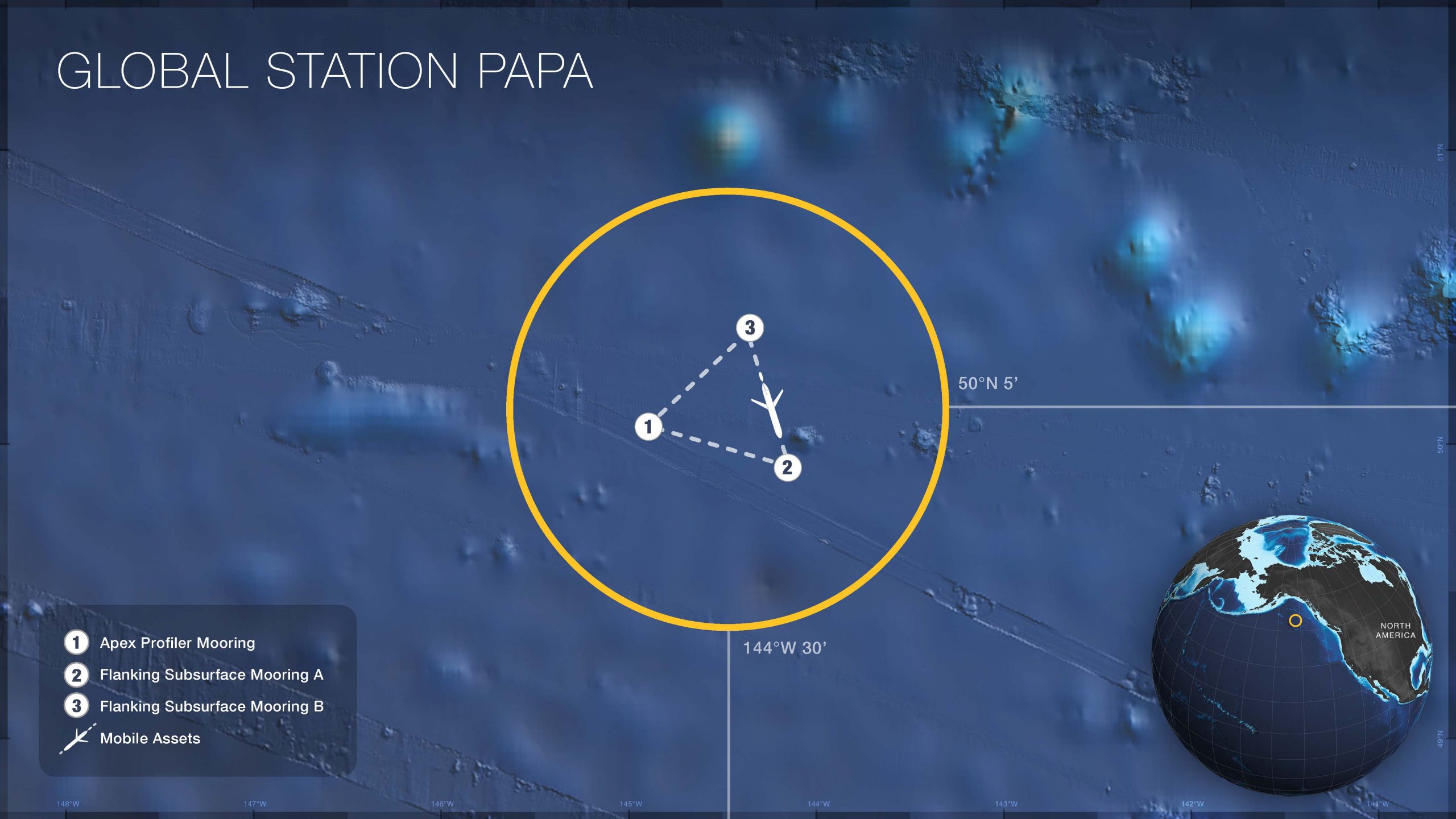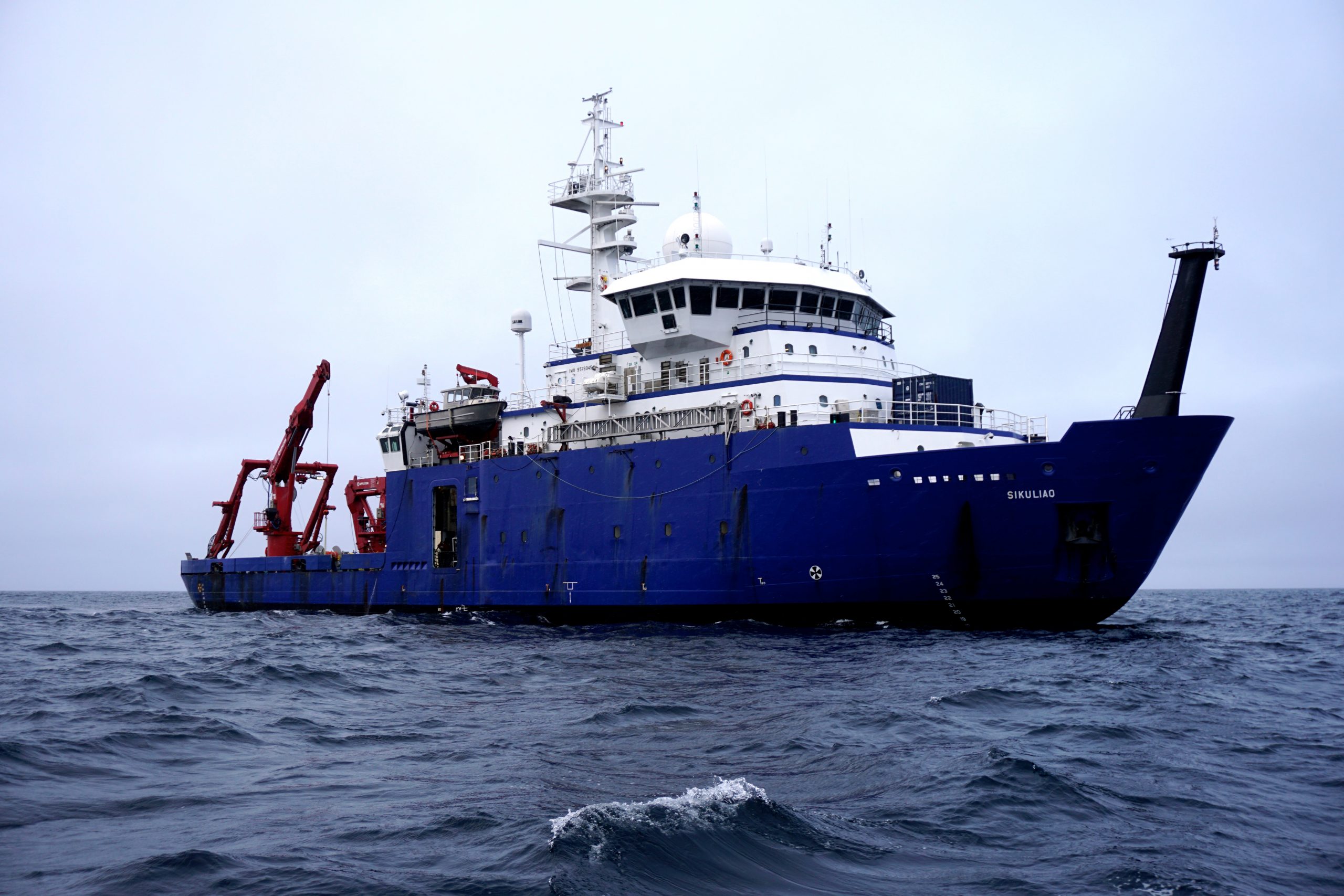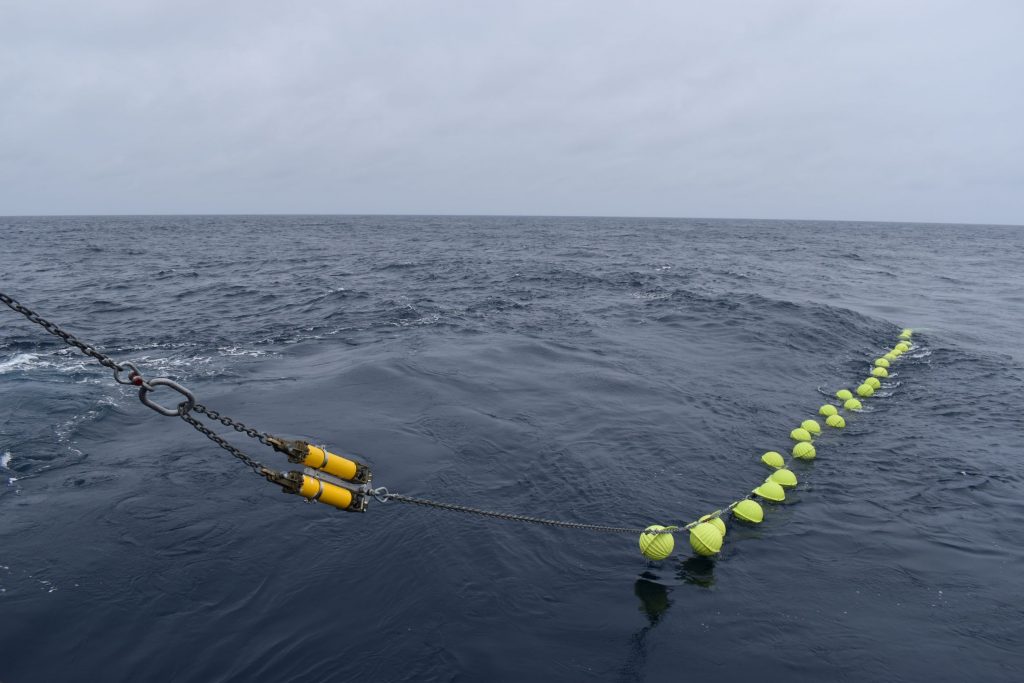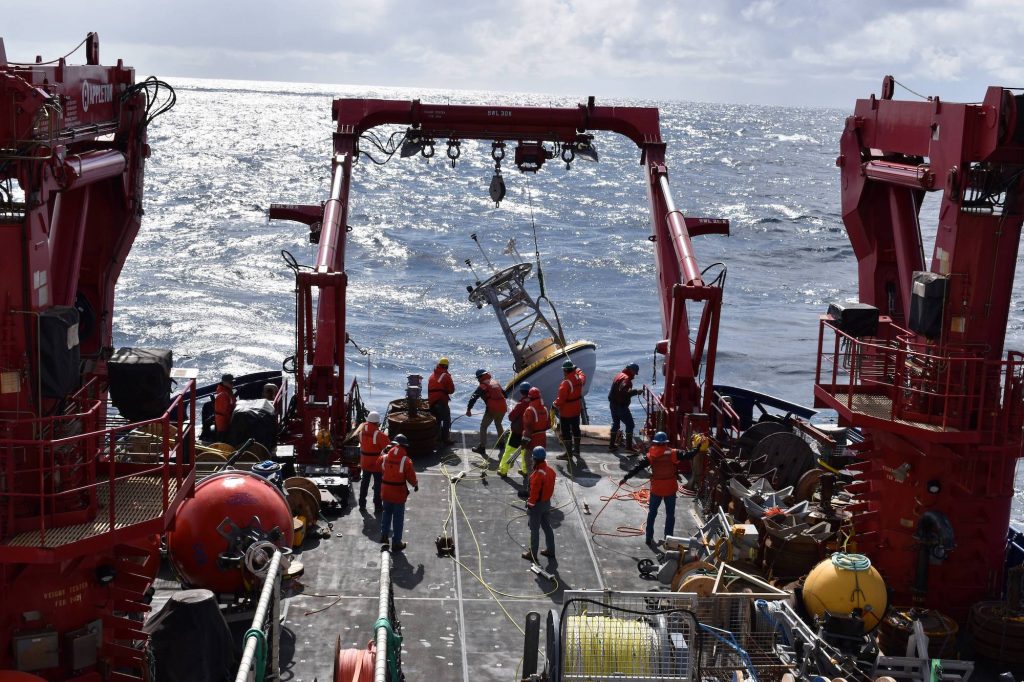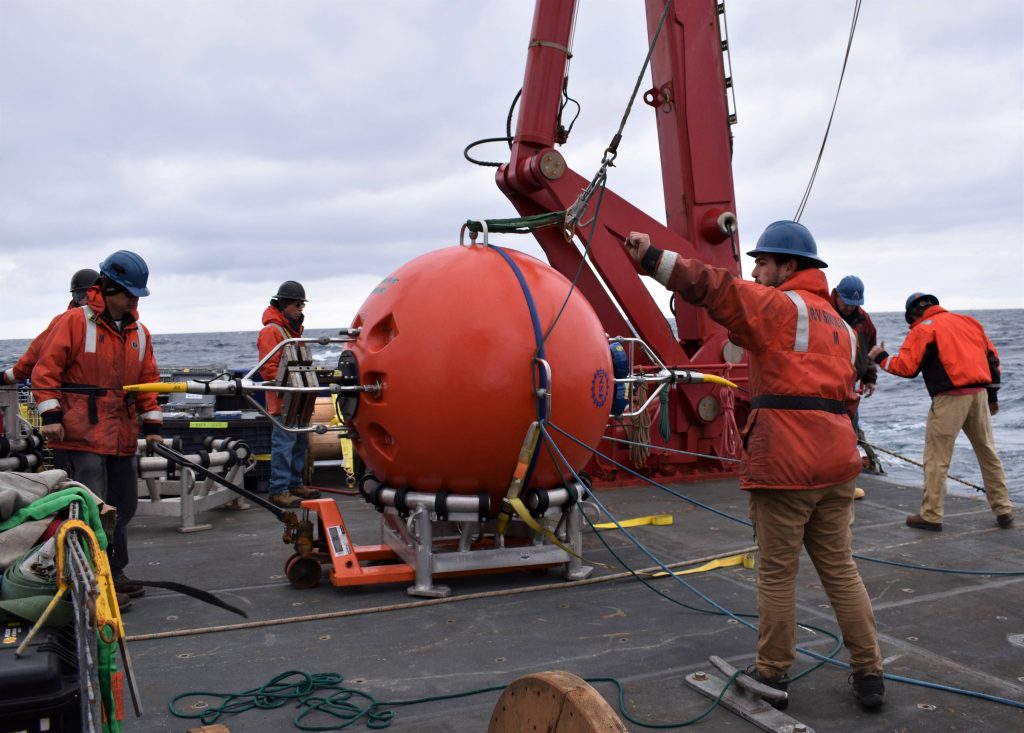Recoveries and Deployments for Station Papa and the University of Washington
A team of ten scientists and engineers is aboard the R/V Sikuliaq for a 15-day expedition (May 13- June 1, 2023) to deploy three OOI moorings, and three gliders, two open ocean and the third a profiling glider. The team will also be deploying a waverider mooring for the University of Washington. Woods Hole Oceanographic Institution's Kris Newhall is serving as Chief Scientist. Other onboard activities will include conducting water and other sampling while underway. The Global Station Papa Array is located in the Gulf of Alaska, about 620 nautical miles offshore. The ship will depart from and return to Seward, Alaska, with a transit time to the array of about 2.5 days. The Array is located in a critical region of the northeast Pacific with a productive fishery subject to ocean acidification, low eddy variability, and impacted by the Pacific Decadal Oscillation. Check back here for regular updates.
.
Location
The Global Station Papa Array is located in the Gulf of Alaska. Station Papa Array consists of a triangular set of moorings (white circles), with the sides of the triangle having a length roughly 10 times the water depth to capture mesoscale variability in each region.
Ship
The 261-foot R/V Sikuliaq is one of the most advanced university research vessels in the world, capable of breaking ice up to 2.5 feet thick.
Updates
Regular posts about life aboard the ship, work accomplished, and encounters with marine life.
